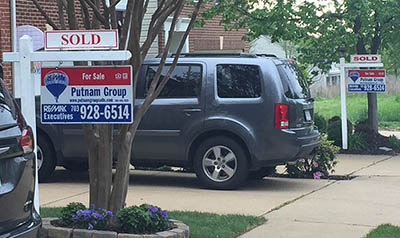
March Existing Home Sales Drop Nearly 3%

Existing home sales fell for the second straight month in March, the National Association of Realtors reported Wednesday, as buying conditions worsened from inadequate housing supply, elevated home prices and rising mortgage interest rates.
The report said March existing home sales (https://www.nar.realtor/existing-home-sales) fell by 2.7% from February to a seasonally adjusted annual rate of 5.77 million. Year-over-year, sales fell by 4.5% (6.04 million).
Single-family home sales fell to a seasonally adjusted annual rate of 5.13 million in March, down by 2.7% from 5.27 million in February and down 3.8% from one year ago. The median existing single-family home price rose to $382,000 in March, up by 15.2% from March 2021.
Existing condominium and co-op sales fell to seasonally adjusted annual rate of 640,000 units in March, down by 3.0% from 660,000 in February and down by 9.9% from one year ago. The median existing condo price rose $322,000 in March, an annual increase of 11.9%.
Every region except the West saw a sales decline. In the largest region, the South, sales in fell by 3.0% in March from the prior month to an annual rate of 2,620,000 and fell by 3.0% from one year ago. The median price in the South rose to $339,000, a 21.2% jump from one year prior. For the seventh straight month, the South experienced the highest pace of price appreciation compared to the other three regions.
Sales in the Northeast fell by 2.9% in March to annual rate of 670,000 and fell by 11.8% from a year ago. The median price in the Northeast rose to $390,200, up 6.8% from one year ago. Sales in the Midwest fell by 4.5% in March from February to an annual rate of 1,270,000, and fell by 3.1 percent from a year ago. The median price in the Midwest rose to $271,000, a 10.4% jump from a year ago.
Sales in the West held steady, posting an annual rate of 1,210,000 in March, but fell by 4.7% from one year ago. The median price in the West rose to $519,900, up 5.4% from March 2021.
“The recent pullback in sales has occurred against a backdrop of increasingly challenging buying conditions,” said Mark Vitner, Senior Economist with Wells Fargo Economics, Charlotte, N.C. “In addition to historically low inventory levels and fast-rising home prices, mortgage rates have moved sharply higher, although most buyers who closed in March likely locked in mortgage rates well below current levels.”
Vitner said some evidence exists that recent weakness in overall home sales can be attributed to a pullback in demand for second homes, noting Redfin, Seattle, reported second-home demand index dropped for the second month in a row in March, bringing the overall index back to May 2020 levels. Demand for primary residences has remained at roughly the same level since June 2020.
“Despite the recent slowdown, sales are still running at a relatively strong pace,” Vitner said. “The 5.77 million-unit pace hit during the month is a faster pace of sales than at any point between 2008 and 2019.”
“The housing market is starting to feel the impact of sharply rising mortgage rates and higher inflation taking a hit on purchasing power,” said Lawrence Yun, NAR chief economist. “Still, homes are selling rapidly, and home price gains remain in the double-digits.”
NAR said total housing inventory at the end of March totaled 950,000 units, up 11.8% from February and down 9.5% from one year ago (1.05 million). Unsold inventory sits at a 2.0-month supply at the present sales pace, up from 1.7 months in February and down from 2.1 months in March 2021.
The median existing home price for all housing types in March was $375,300, up 15.0% from March 2021 ($326,300), as prices rose in each region. This marks 121 consecutive months of year-over-year increases, the longest-running streak on record.
“Home prices have consistently moved upward as supply remains tight,” Yun said. “However, sellers should not expect the easy-profit gains and should look for multiple offers to fade as demand continues to subside.”
The report said properties typically remained on the market for 17 days in March, down from 18 days in February and 18 days a year ago. Eighty-seven percent of homes sold in March were on the market for less than a month.
First-time buyers were responsible for 30% of sales in March, up from 29% in February and down from 32% a year ago. “It appears first-time homebuyers are still looking to lock in at current mortgage rates before they inevitably increase,” Yun said.
Individual investors or second-home buyers purchased 18% of homes in March, down from 19% in February but up from 15% a year ago. All-cash sales accounted for 28% of transactions in March, up from both the 25% in February and from 23% a year ago. Distressed sales represented less than 1% of sales in March, equal to both February and a year ago.
